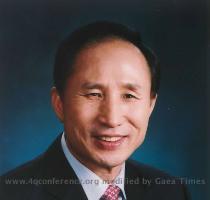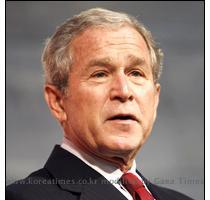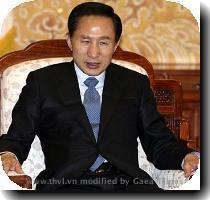South Korean inquiry into bloody hidden history ends; US military escapes much blame
By Hyung-jin Kim, APSaturday, July 10, 2010
Korea bloodbath probe ends; US escapes much blame
SEOUL, South Korea — In a political about-face, a South Korean commission investigating a century of human rights abuses has ruled that the U.S. military’s large-scale killing of refugees during the Korean War, in case after case, arose out of military necessity.
Shutting down the inquiry into South Korea’s hidden history, the commission also will leave unexplored scores of suspected mass graves believed to hold remains of tens of thousands of South Korean political detainees summarily executed by their own government early in the 1950-53 war, sometimes as U.S. officers watched.
The four-year-old Truth and Reconciliation Commission of Korea probed more deeply than any previous inquiry into the country’s bloody past. But a shift to conservative national leadership changed the panel’s political makeup this year and dampened its investigative zeal.
The families of 1950’s victims wanted the work continued.
“The truth about all these past incidents must be revealed, so this national tragedy won’t be repeated,” said Yang Won-jin, 82, whose father was believed shot and dumped into a mass grave 60 years ago.
But the commission’s new president said its work must end.
“Even if we investigated more, there’s not much more to be revealed,” said Lee Young-jo, a political science professor who took charge last December.
The commission was established in December 2005 under the late liberal President Roh Moo-hyun to “reconcile the past for the sake of national unity.” It had a broad mandate to expose human rights abuses from Korea’s pre-1945 Japanese colonial period through South Korea’s military dictatorships into the 1980s.
The most shocking disclosures emerged from the war that began when communist North Korea invaded the south on June 25, 1950, to try to reunify the peninsula, divided into U.S.- and Soviet-occupied zones in 1945.
The commission was the first government authority to publicly confirm what long had only been whispered: The U.S.-allied South Korean military and police carried out a vast secretive slaughter of political detainees in mid-1950, to keep southern sympathizers from supporting the northerners. Up to 200,000 were killed, historians believe.
Hundreds of petitions to the commission told another story as well, of more than 200 incidents in which the U.S. military, warned about potential North Korean infiltrators in refugee groups, was said to have indiscriminately killed large numbers of innocent South Korean civilians in 1950-51.
Declassified U.S. documents uncovered over the past decade do, indeed, show commanders issuing blanket orders to shoot civilians during that period. In 2007-2009 the commission verified several such U.S. attacks, including the napalm-bombing of a cave jammed with refugees in eastern South Korea, which survivors said killed 360 people, and an air attack that killed 197 refugees gathered in a field in the far south.
The liberal-led commission, with no power to award reparations, recommended Seoul negotiate with the U.S. for compensation for survivors of what it agreed were indiscriminate attacks. But the government of President Lee Myung-bak, elected in December 2007, has taken no action.
Lee’s Grand National Party had warned during his election campaign that the truth panel’s work could damage the U.S.-South Korean alliance.
Late last year, expiring terms on the 15-member commission enabled the Lee government to appoint more sympathetic commissioners, who opted not to extend the body’s life by two years and instead to shut it down on June 30. Lee, the new panel chief, withdrew from distribution a 2009 English-language report on commission findings.
The commissioners also toughened the criteria for faulting U.S. wartime actions, demanding documentary proof U.S. forces in each case knew they were killing civilians, commission investigators told The Associated Press, speaking on condition of anonymity because of their sensitive position.
In a rush of final decisions June 29-30, the commission found no serious U.S. wrongdoing in the remaining cases of civilian killings, attributing them to military necessity.
With military operations nearby, “collateral damage may be inevitable,” commission President Lee told the AP, using the U.S. military’s euphemism for civilian casualties.
“In many cases, we did not have documented evidence enough to clear the fog of doubts,” he said.
In a small number of cases, a commission majority found “low levels of unlawfulness” by the U.S., Lee said, but the panel did not recommend seeking compensation.
Those cases included:
—A U.S. air attack on a refugee ship docked at the far-southern port of Yeosu on Aug. 3, 1950, in which witnesses say hundreds were killed.
—The killing of some 300 civilians on July 11-12, 1950, by U.S. bombers attacking the Iri railway station in southern South Korea, many miles from advancing North Korean troops.
—A U.S. Navy destroyer’s shelling of a refugee beach encampment near the southeastern city of Pohang on Sept. 1, 1950, in which survivors say 100 to 200 people were killed. A shipboard document shows the crew reluctantly fired on the civilians at U.S. Army direction.
Such incidents fit a pattern of indiscriminate U.S. attacks on South Korean civilians evident in declassified wartime files uncovered in archival research by the AP and other journalists and historians.
In 1999 the AP confirmed the U.S. killing of refugees at the South Korean hamlet of No Gun Ri in July 1950, in which survivors estimate 400 died, mostly women and children. That report led witnesses to come forward with accounts of other large-scale U.S. killings.
The U.S. archives show clear proof of intent, including 1950 communications from the U.S. ambassador in South Korea and a top Air Force officer saying U.S. forces, to guard against infiltrators, had adopted a policy of shooting refugees approaching their lines, and a series of orders from U.S. commanders to fire on all civilians. Refugees are “fair game,” said the 1st Cavalry Division’s Maj. Gen. Hobart R. Gay.
In interviews with journalists and a Pentagon team that investigated No Gun Ri, Army and Air Force veterans also attested to indiscriminate killings. Pilots who strafed refugee columns on South Korea’s roads had been told to attack “people in white,” the garb of Korean peasants, because they might harbor infiltrators.
“Those U.S. warplanes attacked us even though they knew we were refugees. That’s a war crime. They cannot just cover it up,” said Lee Won-woo, who was 2 years old when his parents and older sister were killed with 70 other refugees attacked by U.S. aircraft near Kyongju, behind U.S. lines in the south, on Aug. 14, 1950.
It was among the cases in which the truth commission last year called for U.S. compensation.
“It’s regrettable the United States seems indifferent to these incidents,” said Oh Won-rok, head of a national association of 80 survivors’ groups.
It’s more difficult to assess the U.S. role in an even greater wave of killings, the mass political executions of mid-1950 carried out by President Syngman Rhee’s government.
Family survivors hold the U.S. partly responsible, since the South Korean military executioners were under overall U.S. command, and U.S. officers were sometimes present, even photographing the grisly events.
Witnesses say that in the weeks after North Korea invaded in mid-1950, southern authorities emptied the prisons of suspected leftists, lined them up and shot them in the head, dumping the bodies into hastily dug trenches, abandoned mines or the sea. Few had ever faced trial.
Last November, after investigating petitions from surviving relatives, the commission announced it had verified and identified 4,934 execution victims.
But historian Kim Dong-choon, the former commissioner who led that investigation, estimates at least 60,000 to 110,000 died, and similar numbers were summarily executed when northern troops were driven from South Korea later in 1950 and alleged southern collaborators were rounded up. “I am estimating conservatively,” he said.
Korean War historian Park Myung-lim, methodically reviewing prison records, said he believes perhaps 200,000 were slaughtered in mid-1950 alone.
The commission also confirmed that North Korean occupation forces and southern leftists executed southern rightists, including police and other officials, though in lower numbers than in the South Korean government killings.
In 2007-2009, the commission oversaw excavations at 13 suspected mass graves and exhumed some 2,000 sets of remains of victims of the South Korean government executions. But about 140 other sites remain unexplored.
“Thousands are still buried in the Daejeon area. This is really heartbreaking for the victims’ families,” said Kim Jong-hyun, head of the bereaved families group in that central city, where up to 7,000 people were slaughtered in assembly-line executions in July 1950 and dumped into pits stretching for a mile down a valley.
Investigations and exhumations should continue, family representatives said.
“The government must establish a foundation to investigate, to restore the honor of the victims and to make compensation,” said Oh, the survivors’ national chairman.
Although the commission was empowered to establish an institute to assist future research, no action was taken. Meanwhile, the National Assembly’s failure to enact a compensation law led petitioners to sue the government, so far without success.
The U.S. government has investigated only the No Gun Ri refugee case, acknowledging in 2001 the killing there of an “unknown number,” but rejecting survivors’ demands for an apology and compensation.
At the U.S. Embassy here, spokesman Aaron Tarver said in 2008 it was not monitoring the commission’s work. He recently indicated the embassy still took no active interest in the findings, saying only, “We welcome the efforts of the Truth and Reconciliation Commission to investigate abuses of human rights and efforts to correct any possible inaccuracy in the historical record.”
“There’s less and less of a possibility the U.S. will look into its past wrongdoings in the Korean War,” said Ahn Byung-ook, the investigatory commission’s former president.
Lee, his successor, suggested that “some reconciliatory gestures or actions might be desirable by the United States.”
Survivors have never reconciled themselves to what happened to their loved ones a half-century ago.
Many survivors, fatherless or orphaned, were reared in poverty and, because of “leftist” family links, denied good educations and jobs by the authoritarian regimes that ruled South Korea into the late 1980s.
“I stayed away from my hometown. I’ve lived in hiding for a long time,” said the elderly Yang.
When she was a teenager, Chung Hae-yeol’s father and mother were executed separately, months apart, as alleged collaborators. “The remains of my parents have never been found,” she said.
Her face stricken, her hands nervously fingering a paper cup, Chung went on:
“I am 77, and I’ve lived to this age crying. I dream of my parents and I wake up crying. I miss them so. But I want to emphasize: This is not just a personal matter for me, but a matter of our national history.”
Tags: Asia, Collateral Damage, Criminal Investigations, East Asia, Embassies, Lee Myung-bak, North America, North Korea, Seoul, South Korea, United States



